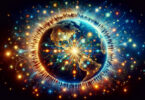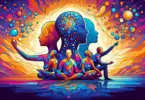Guest writer for Wake Up World
I am profoundly acquainted with the new age movement.
As someone who has explored, and in many cases practiced (and sometimes promoted), the endless varieties of new age methodologies and philosophies out there, I’ve seen pretty much all of it.
While yes, there’s a lot of undeniable beauty in the new age movement, there are also a lot of unhealthy and even dangerous elements within it, surprisingly.
[pro_ad_display_adzone id=”110028″]
I hope to bring more balance to this arena. My goal is to support you, particularly if you’re new to the spiritual journey (and even if you’re a veteran), in avoiding the traps and pitfalls inherent in new age mentality.
After being disillusioned too many times and witnessing the confusion of those on this inner path alongside me, it’s time to get real and grounded in some down-to-earth spirituality.
What is the New Age Movement? (It’s Origins)

The new age movement is an eclectic combination of many different psychological, philosophical, and religious ideas from around the world. It emerged after the countercultural hippy movement of the 1960s and began to truly blossom by the 1980s.
Ethnobotanist and psychonaut, Terence McKenna, once defined the new age in this way:
The New Age is essentially humanistic psychology eighties style, with the addition of neo-shamanism, channeling, crystal and herbal healing, and this sort of thing.
The original driving force behind the new age movement was to liberate humanity from the dry, rigid, life-denying, and in many cases, dangerous ideas propagated by orthodox religion.
Such a noble and worthy ideal to leave corrupt religious ideology resulted in the impulse to combine, cross-reference, and merge multiple wisdom paths and teachings to achieve a kind of universal unity.
Unfortunately, however, this syncretism, this fusion of different ideas and practices from around the world led to a dilution of their power. As such, we now have terms like “new age fluff” which is self-explanatory, and also references to “new agers” which is a term that’s increasingly used in disparaging ways.
Note: not every “non-religious” form of spirituality is necessarily new age. In other words, those who identify as “spiritual but not religious” are not always new age (although sometimes they can be).
Benefits of the New Age Movement

Although I’ve called new age spirituality the “McSpirit” of spirituality (and I still stand by that), I also want to point out that it does have value.
There’s a lot of good inherent in new age spirituality.
Here are some of the benefits or best things about the new age movement:
- It challenges religion – considering all the horrors perpetrated by religion, this point is enough to make the new age movement a positive force in the world
- It’s friendly and acts as a doorway into the spiritual path – for those totally new to spirituality, the new age movement’s focus on good vibes only and “love and light” encourages the spiritual impulse to come out and play
- It provides people with hope – many who have suffered terrible loss have found solace in the gentleness of new age ideas and practices
- It promotes the divine feminine – most religious paths are masculine dominated and therefore alienating to the other equally present force of life: the feminine (or yin)
- It embraces the body and sacred sexuality – sex, sexuality, and the body as a whole aren’t seen as shameful or wrong, but are celebrated, and this is beautiful
- It elevates the role and value of nature – nature is seen as sacred, not something to be used, ignored, or dominated (as in many religious paths)
- It emphasizes a personal connection with the Divine – for those who feel spiritually hungry, the new age movement reminds us that yes, we can connect with the Divine, it is our birthright!
In my years exploring, practicing, and in some cases promoting the new age movement, I’ve witnessed these wonderful benefits.
However, as positive as it is, it also swarms with numerous ‘demons’ beneath the surface.
The Cons of the New Age Movement, aka. McSpirituality

Without getting wordy and long-winded here, let’s just get right into the cons and greatest disadvantages of the new age movement.
I present these issues so that you can be keenly aware of the traps inherent in the new age movement that many overlook and never mention.
Hopefully, this exposé will save you years of struggle, confusion, and pain:
1. Encourages Spiritual Escapism
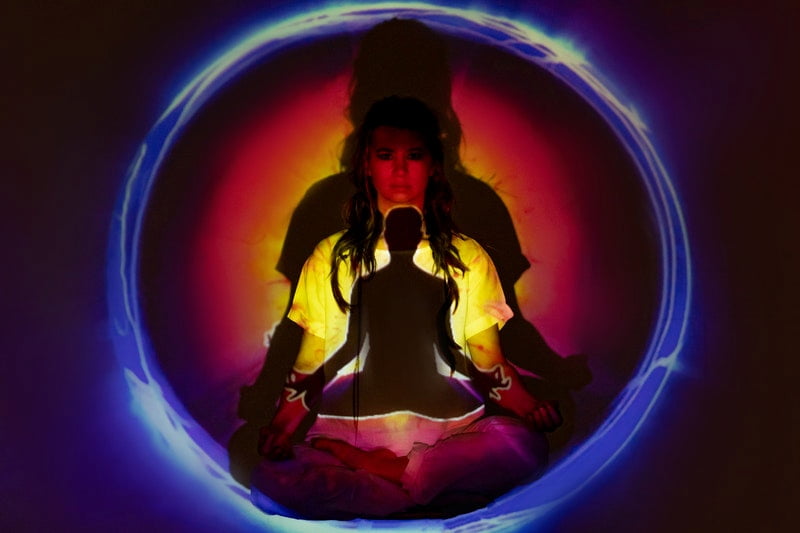
As sparkly, cosmic, and feel-good as new age spirituality is, it’s also undeniable a form of escapism.
“Why is that bad?” you might instantly wonder. “Reality is full of terrible horrors.”
Yes, it’s true that reality can sometimes be hard to deal with. Government corruption, social media fake news, poverty, wars, trauma, racism, sexism, environmental destruction, and more recently a world pandemic can overwhelm us.
Some people may need the new age movement to help them get a handle of their mental health, and that’s totally understandable. I’ve been there too.
And yet, if we stay within the new age, with its emphasis on everything that is out of this world (spiritual ascension, higher vibration, higher self, 5D, pleiadians, aliens, etc.), we ignore the need to face this human experience. We spiritually bypass the uncomfortable reality around us and become addicted only to that which gives us a spiritual high.
This focus on anything that is blissful, transcendent, and full of light isn’t progressive, it’s regressive. It’s infantile spirituality.
Furthermore, the spiritual path isn’t all about love and light. It is also about darkness, pain, ego death, and awkward transformation as well. If you truly want to “follow your bliss,” you’re going to have to deal with some ugly situations, feelings, and tendencies within you and others. And that’s a fact of life.
2. Low Committment and Low Impact

Because of the escapist nature of new age spirituality, it tends to avoid the issues plaguing the world, and thus makes little to no active social impact.
Poverty, racism, environmental degradation? Forget it! Although on the surface the new age movement talks a lot about how “sacred” everything is, when it comes down to it, there isn’t much active involvement in the world. If there is active involvement, it’s usually because the new age practitioner has sided with another philosophy like veganism, feminism, minimalist, sustainability, and so on.
There is also a marked lack of commitment amongst new age practitioners who tend to jump from one philosophy or practice to another. If drumming circles become boring or unfulfilling, angel channeling becomes the next dopamine hit. Perhaps crystals and manifestation grids will come next, and then studying numerology and getting a psychic reading will follow.
As detrimental as religions have been to humanity, there is one thing that they have offered us, and that is the ability to commit, to make a substantial social impact, and to provide in-built accountability.
With the new age movement, there’s no accountability – you’re meant to keep yourself in check. And yet as a fallible human being, is that really reasonable?
As Steve Bruce writes,
[New Age] elicits only slight commitment and little agreement about detail. It thus makes a shared life unlikely. It has little social impact. It has little effect even on its adherents. It does not drive its believers to evangelise. It is vulnerable to being diluted and trivialized . . . eclectic to an unprecedented degree and dominated by the principle that the sovereign consumer will decide what to believe . . . a low-salience world of pick-and-mix-religion.
This ‘pick-and-mix’ spirituality that the new age movement essentially is, results in what we could call ‘spiritual tourism’ – hopping from one thing to another without ever settling down, going deep, or seeing through.
Don’t get me wrong, exploring and being curious is healthy and beautiful. But the shiny allure of the new age movement can keep us perpetually stuck in that place, without ever deepening.
3. Stunts Our Growth

While it’s liberating at first to be able to cherry-pick what we like out of various wisdom traditions throughout the world, it also tends to stunt our growth.
The term “new age fluff” sums up what I’m about to say pretty well: with the ability to pick and choose what we like, we also get to avoid what we dislike. Namely, the new age movement promotes avoiding the reality of pain, darkness, death, and suffering. Instead, new age practitioners tend to focus only on what feels good, is affirming, is artificially empowering, and helps them to avoid the harsh realities of the world.
What happens when we avoid the darkness is that we become stunted. We become overly dependant on our ‘healers,’ ‘psychics,’ ‘shamans’ and other people and tools to alleviate our pain and provide us with direction. We lose the ability to develop resilience, focus, determination, and deep courage.
My conclusion is that while yes, religion often equals imbalanced yang/masculine energy the new age movement represents the opposite: imbalanced yin/feminine energy.
4. Promotes Spiritual Consumerism

I’m sure you’re familiar by now with what a “new age shop” looks like. Walking in, you’ll find an endless assortment of candles, crystals, incense, dream catchers, cards, books, statues, essential oils, and the list goes on and on. Chances are there’s even one in your own town!
If you’ve been on Instagram or any other social media platform, you’ll also likely be familiar with the “spiritual aesthetic.” This new age invention involves pictures that look dreamy, airy, and feature an array of crystals, pendulums, candles, and other metaphysical trinkets (perhaps with a yoga mudra or pose thrown in for good measure). Such consumerist imagery is everywhere. And it’s mesmerizing!
Within the new age movement there’s almost this unspoken assumption and even rule that in order to be spiritual, you need to look spiritual. Without looking spiritual, without displaying your beautiful spiritual material items to the world, you might as well not bother!
While there’s nothing wrong with having some pretty or mysterious looking tools, when your spiritual path is all about getting more, it’s spiritual materialism. As the Tao Te Ching says,
Reduce what you have. Decrease what you want.
If you’re on the spiritual path, you’re probably already quite aware of the fact that stuff doesn’t make you happier. Material things don’t fill that void within you. In fact, they often contribute to feeling empty inside.
And yet, because of the lack of a strong central core, the new age is prone to fuelling such an insidious branch of consumerism that preys on spiritually empty and undiscerning individuals.
5. Results in Cultural Appropriation

Cultural appropriation is what happens when someone (usually from a dominant culture) adopts elements from another (usually a non-dominant) culture.
For instance, someone might adopt the fashion, tattoos, speech, rituals, and other practices from another culture without asking for permission or acknowledging where that adopted element came from.
Unfortunately, the tendency to promote cultural appropriation is one of the more nauseating elements of the new age movement. I’m sure you’ve seen and heard ‘new agers’ use and misuse rituals, items, and other sacred words and beliefs that disrespect the original culture that carried these customs.
Now, I’m aware that some level of cultural mixing is necessary and needed in the world. Variety is the spice of life, as they say. And I’m not the “woke police” trying to punish anyone for saying a Sanskrit mantra or wearing an Om pendant – that’s silly and honestly another form of ego inflation (by acting as the almighty savior or punisher of others).
But when someone tries to identify as a member, for instance, of an indigenous culture when they’re clearly not, that’s obviously disrespectful. And that’s the thing about the new age, it creates this “noble savage” idea about other cultures and promotes using their customs without having a dialogue and finding a sense of shared humanity.
Some examples of cultural appropriation perpetuated by the new age movement can be found in the misuse of Native American spirituality (sweat lodges, smudging, etc.), self-styled shamanism that borrows sacred rituals without permission, and other metaphysical practices.
Note: not all use of other cultural images is necessarily disrespectful or blatant cultural appropriation – it’s all about the context. One helpful question many new age practitioners would do well to ask is, “Are my actions hurting or degrading the value of other cultures?” and “How am I promoting white supremacy or racism by purchasing this or practicing that?”
6. Promotes Ego-Centrism
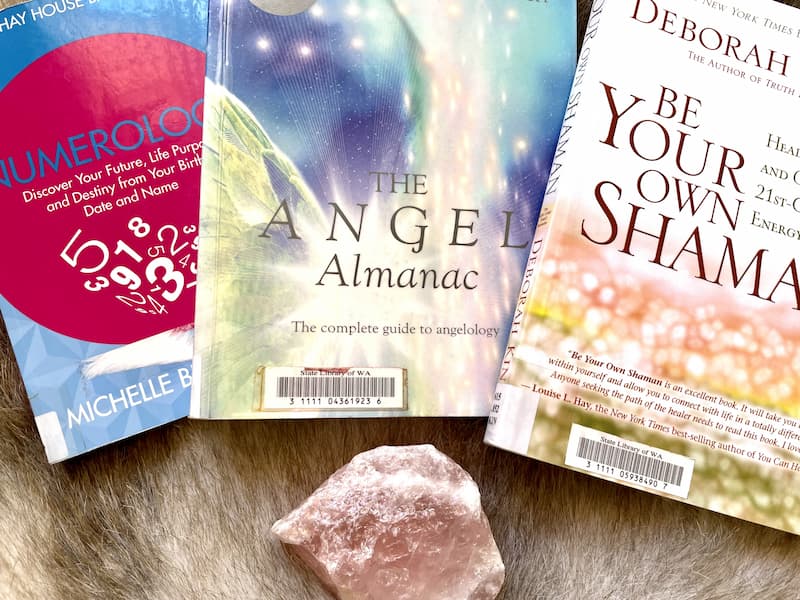
While I find most religions distasteful, I do appreciate their ability to help their adherents to practice humility and recognize the limitations of the ego. The opposite is true with new ageism where you essentially become God.
If I was given a gold coin every time I saw a post, book, workshop, or other resource promoting “your gifts,” “your power of manifesting,” “your growth,” “your angel number,” “aliens who have contacted you,” “you being a goddess,” “your planet in mercury retrograde,” etc. etc. … I would be Supreme Ruler of the Universe. 😉
Certainly, it’s normal and good to learn about ourselves. It’s important to desire to better our lives. But at a certain point, our spiritual paths need to move beyond just us and our interests and instead to others, nature, the world, and the Divine. If we’re always focusing on ourselves, our spirituality can quickly become ego-centric and shallow.
“Not my will but thine be done” was probably one of the more illuminating phrases of Jesus and it’s a quality I, once again, appreciate about religion (as much as I dislike most religious institutions). Humility, reverence, and devotion are all qualities blatantly missing from new age spirituality.
And the irony is that while the new age demonizes the ego, it is ruled by it – when one’s spiritual path is all about “me, my, and mine” how could it not be?
At some point, we need to learn to surrender, to let go, and to trust in something Greater than ourselves.
Even the focus on one’s Higher Self can be confusing, mixing up the subjective ego with the objective Divine essence. Sadly, this leads to one of the greatest tragedies: a grotesquely inflated ego that is drunk on its own supposed ‘virtues,’ ‘gifts,’ insights, and ‘downloads’ from the Divine, mistaking itself as ‘enlightened’ and essentially untouchable. I call this grievous pitfall spiritual narcissism.
The reality is that for true spiritual growth to occur, the ego must dissolve and go on an immensely painful process of ‘crucifixion’ and dismemberment. There’s just no way around it folks.
How Do I Avoid the Perils of New Age Spirituality?

The result of all the above six pitfalls of new age spirituality is why I refer to it as McSpirituality (or the McDonalds of spirituality if that isn’t clear).
The unfortunate conclusion I’ve drawn after more than a decade in this field is that it is like junk food – sure it fills you, but it ain’t that good for you.
That being said, yes, there are good things about the new age. But if we want to be more than just tourists and dabblers (which is fine), if we truly want to touch deep states of peace, love, and freedom, we need something more.
How do we avoid the perils of McSpirituality? Here are some suggestions:
- Find one holistic path (that involves the body, heart, mind, and soul) and go deep within it. Follow it through until the end. Recognize the hedonistic adaptation that makes you want to jump around and try something new. (Of course, it’s okay to experiment with other practices, but ensure you have one central unmoving one.)
- Find a path that has in-built accountability. In other words, when you’re getting lazy or forgetful or are totally off your tits with bizarre ideas, who ya gonna call? Who is there to help motivate, correct, and guide you? Having a community to return to unified with the same purpose will be essential.
- Find a path that focuses on honoring something greater than yourself. Humility is such a crucial part of the spiritual path, and if it’s all about you all the time, it will become shallow and unfulfilling quite quickly.
- Be courageous and dare to face the shadows. Learn to accept (and find resources that help you to embrace) the fact that life is full of a lot of nasty shit. There is pain and suffering everywhere. How can you face that? How can you embrace the fact that one day you will die?
- Find a path that encourages social change. As a Buddhist, I adore the term coined by Zen master Thich Nhat Hanh: interbeing. Such a word refers to how interconnected and essentially inserparable we all are. What we do influences everything else, and everything else influences us. This simple concept helps us to understand how important it is to live consciously and inspires action. Ask yourself, what can I do to make a change in society, however small?
I think anyone new to spirituality is bound to fall into the trap of new ageism sooner or later – me included. But it’s okay. This is all a learning process!
The Third Way
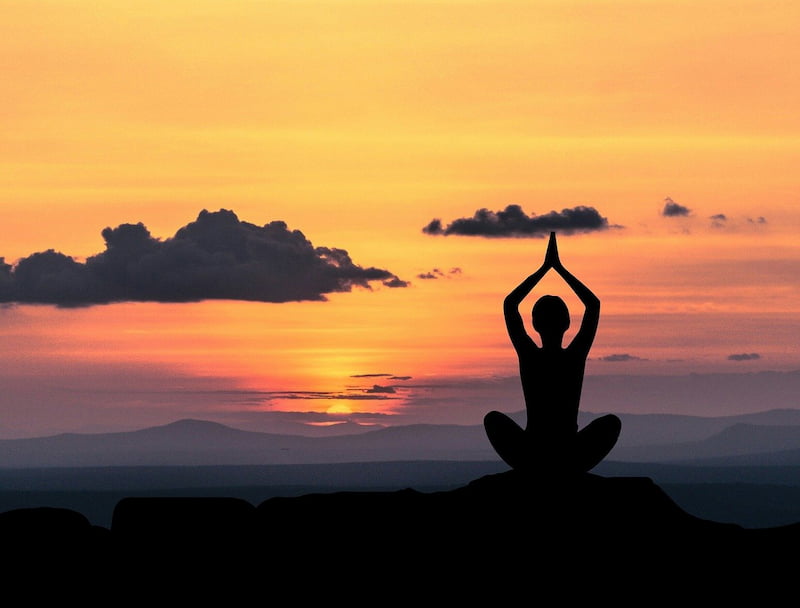
There are times when the spirit is completely darkened because it needs to be reborn.
– Carl Jung
In many ways, the new age movement is the antithesis of religion. Yet I believe the friction between the new age and religion is needed to create a third way, an integration of both new age free-thought and religious depth.
In other words, if our spiritual paths are to mature, there needs to be a synthesis of the yin (new age) and yang (religion).
Without religious qualities, new age is shallow, consumerist, escapist, and ego-centric. And without new age qualities, religion is stale, dry, shame-inflicting, and dogmatic.
So the question I pose to you now is this: how can you walk the third way? What does that look like for you?
Final Words
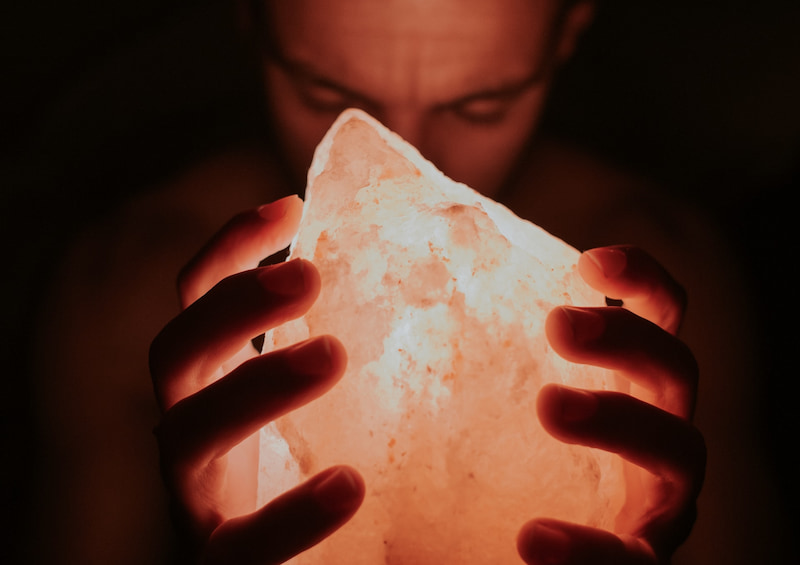
New Age culture cannot create a shared sense of direction or movement because it’s central body elicits little commitment and agreement about the details. With it’s endless varieties, techniques and practices, people cannot unite to evangelize it, it becomes trivialized and diluted.
– J.R. Lewis & J.A. Peterson, Controversial New Religions
The new age movement has helped humanity, but also hindered it.
With its tendency to selectively choose only pleasant truths, it denies the essential wholeness of the human condition with all of its joy and suffering.
Is it “bad” or “wrong” to dabble in the new age? Absolutely not. We all need to do a little exploration which is totally healthy and normal. And if we want to stay within the new age forever, that’s fine too. At the end of the day, we’ve all got to do what suits and resonates with us.
But for those who are called to go beyond the new age, I hope this article has helped, inspired, and motivated you to go a little deeper.
What are your thoughts about the new age? I’d love to hear below. Please also share this article with someone if you think it might help them. ?
Recommended articles by Aletheia Luna:
- How to Create Your Own Full Moon Ritual (With 5 Suggestions)
- Anima and Animus: How to Harmonize Your Masculine and Feminine Energies
- The Sensitive Person’s Guide to Emotional Regulation (in 10 Minutes or Less)
- 25 Signs You Have a Wounded Inner Child
- Feeling Empty: 5 Ways to Heal Your Inner Void
- The Ultimate Guide to Heart Chakra Healing for Beginners
- The Dark Side of Spiritual Healing That No One Talks About
- The Origins of the Spirit Animal, Totem and Power Animal
- 9 Ways to Awaken the Divine Masculine Within You
- How to Channel Your Soul Through Automatic Writing
About the author:
Aletheia Luna is an influential spiritual writer whose work has changed the lives of thousands of people worldwide. After escaping the religious sect she was raised in, Luna experienced a profound existential crisis that led to her spiritual awakening. As a psychospiritual counselor, tarot reader, and professional writer, Luna’s mission is to help others become conscious of their entrapment and find joy, empowerment, and liberation in any circumstance. See more of her work at lonerwolf.com.
This article, The New Age Movement is the “McSpirit” of Spirituality, was originally published on lonerwolf.com, reproduced with permission.
[pro_ad_display_adzone id=”110027″]




